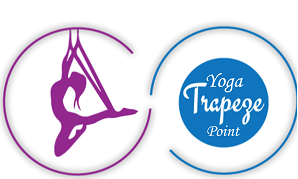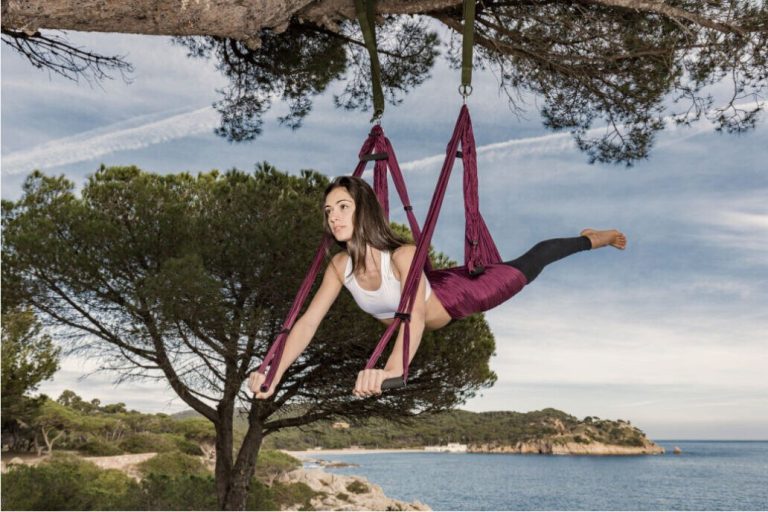Yoga Trapeze for Back Pain: Unwind Your Spine and More

Do you find yourself constantly battling back pain? You’ve likely tried many remedies, but have you considered the potential relief a yoga trapeze could offer? There is a need for many people to learn about trapeze yoga and how it may significantly improve flexibility, spinal health, and overall back comfort.
Understanding the Magic Behind Trapeze Yoga
Let’s start by explaining the fundamentals of trapeze yoga. Through the use of the hammock as a prop, practitioners of trapeze yoga are able to explore new limits in their strength, flexibility, and balance. The hammock acts as a versatile tool that assists in achieving proper alignment, relieving tension, and enhancing body awareness. That’s trapeze yoga for you! But what makes it a go-to for back pain warriors? Let’s scroll here.
Potential Benefits: More Than Just a Stretch
Using a yoga swing for back pain isn’t just about doing fancy poses. Yoga swing has superb benefits. When you hang upside down, you experience yoga swing spinal decompression.
This inversion technique can:
Ⅰ.Alleviate Pressure: It eases the pressure on your spine, which often compresses over time due to gravity and lifestyle habits.
Ⅱ.Enhance Circulation: Improved blood flow equals healthier back muscles and discs.
Ⅲ.Strengthen Core Muscles: Engaging your core during various yoga trapeze moves helps stabilize your spine, offering long-term comfort.
Are There Any Risks?
Like any physical practice, using a yoga trapeze for back pain comes with cautionary tales. The risk of falls, incorrect posture, or overstretching can lead to new or exacerbated injuries. It’s vital to acknowledge your body’s signals and know when to back off.
Setting the Stage: Incorporate Yoga Trapeze the Right Way
Eager to swing your way to a happier back? Slow down! Integrating a yoga trapeze into your back pain management routine should be a mindful process.
Choosing the Right Equipment
Yes, the market is flooded with options, but not all are created equal. Search the reviews of our selected yoga trapeze & make the right decision. Whether you’re eyeing a yoga trapeze with stand or exploring stand-alone swings, quality matters. Look for trapeze stands known for their sturdiness, and don’t compromise on the material and comfort of the swing itself.
Professional Guidance is Key
Diving into aerial yoga swing poses without proper guidance is like sailing without a compass. Seek professional advice, especially when you’re a beginner. Trust me, your back will thank you for it!
Busting Myths: The Truth About Yoga Trapeze for Back Pain
Have you ever heard rumors about yoga on a rope and been confused? You’re not alone! Let’s untangle some common misconceptions.
“It’s Only for Circus Performers”: Nope! With proper guidance, anyone can embark on yoga trapeze poses for beginners. It’s all about adaptation.
“Instant Results Guaranteed”: Remember, patience is a virtue. While the yoga trapeze benefits are plentiful, your body needs time to adjust and heal.
Learning Through Visuals: Instructional Guides to Get Started
Are you a visual learner? Bingo! Numerous instructional videos can guide your journey through various yoga swing positions. These step-by-step tutorials can be invaluable in mastering the art safely and effectively.
Safety First: Guidelines for a Pain-Free Back
We’ve talked about benefits, busted myths, and shared success stories. Now, let’s cement your pathway with safety strategies to ensure a beneficial, hurt-free experience.
- Start Gradually: Rome wasn’t built in a day, and neither is your mastery of the yoga trapeze moves. Begin with basics, and gradually embrace more complex yoga swing positions.
- No Solo Performances: Especially in the beginning, practice under supervision. A spotter can prevent falls and mishaps.
- Consistency is Your Friend: Regular, shorter sessions trump rare, extended ones. Consistency helps your body adapt and strengthens your back over time.
Wrapping up
Without a doubt, using a yoga trapeze to help with back pain is a trip full of care, patience, and safe practice. Doing both regular yoga and aerial tricks at the same time is not only good for you, but it’s also fun. Are you ready to turn your back into a happy, upside-down gift?
Frequently Asked Questions
How often should I practice trapeze yoga for back pain relief?
It’s generally recommended to start with two to three times a week, allowing your body to rest between sessions. As you build strength and flexibility, you can adjust your routine.
Can I set up a yoga trapeze at home?
Absolutely, provided you have adequate space and a strong support structure. It’s often preferable to invest in a high-quality yoga trapeze stand for ensured safety and stability. See our trapeze installation tutorial.
Are there any health conditions that make trapeze yoga inadvisable?
Yes, individuals with high blood pressure, glaucoma, or heart disease, among other conditions, should consult their doctor. Pregnancy also requires a healthcare provider’s approval.
Is it necessary to have prior yoga experience before trying trapeze yoga?
Not necessarily, but basic yoga knowledge helps. Understanding fundamental poses and breathing techniques can enhance your trapeze yoga experience.
Can trapeze yoga replace my regular back pain treatment?
It’s an adjunct therapy, not a replacement. Continue your prescribed treatment and use trapeze yoga as a complementary activity. Always discuss such integrations with your healthcare provider first.

